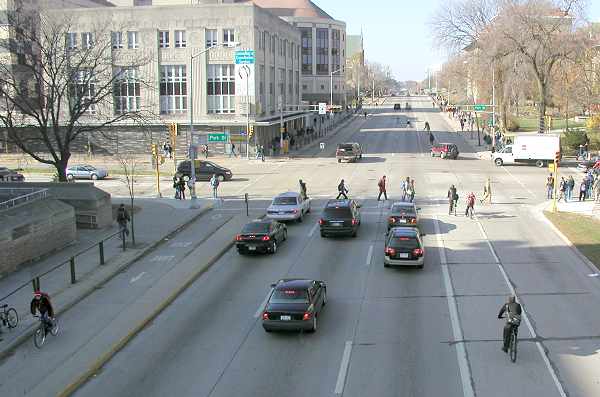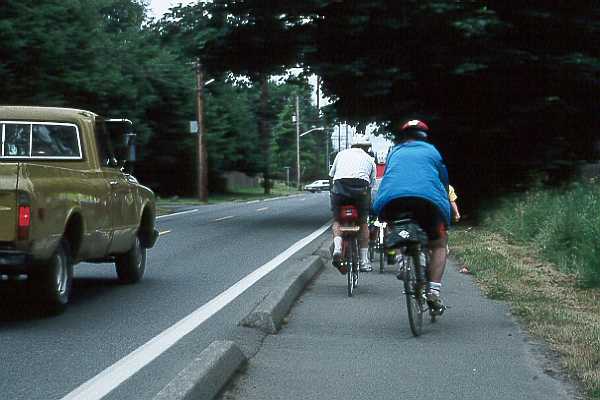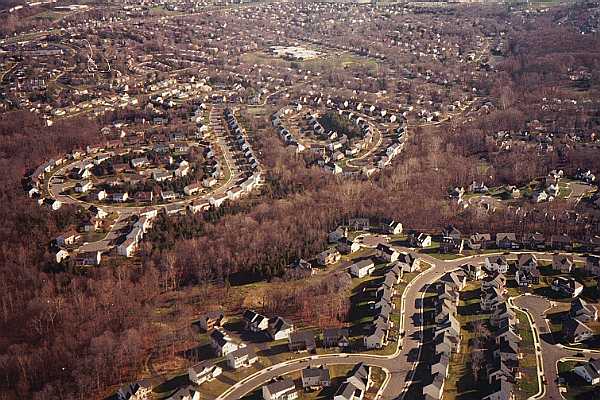| Top: bikexprt.com home page Up: my campaign Previous: Bike-Ed Initiatives |
 My campaign My campaignfor LAB Regional Director |
| Top: bikexprt.com home page Up: my campaign Previous: Bike-Ed Initiatives |
 My campaign My campaignfor LAB Regional Director |
| This page was first posted as part of my 2003 campaign for New York-New England Regional Director of the League of American Bicyclists. I am keeping the campaign pages online, with brief additional comments (here, inside the box), for the information of League members. |
| I ride primarily on roads, as a vehicular cyclist. I have taught vehicular cycling as
an LCI since 1982. I recognize that most cycling is, and must continue to be, on ordinary
streets and roads. But I also recognize that separate bicycle facilities can be useful, as shortcuts, for access to areas not served by roads, and for scenic, recreational riding. I have willingly assisted with design of rail trail projects including the Minuteman Rail Trail and Cochituate Rail Trail in Boston suburbs. I also am willing to entertain unconventional ideas for bicycle facilities, as long as these genuinely improve bicycling conditions. For example, on my Web page about contraflow bicycle travel, I express approval for some contraflow facilities, while criticizing others that have serious safety issues. The photo below shows an example that works rather well. |
University Avenue, Madison, Wisconsin. Contraflow bike lane
(left)
Bike lane adjacent to bus lane (right). Not as unconventional
as it looks. Normal rules of the road apply here.
 Ann Freiwald, |
I do, however, strongly oppose bicycle facilities which carry false expectations of
safety, which direct bicyclists or motorists into unsafe and confusing maneuvers, and
which increase travel time or distance unreasonably. I oppose mandatory sidepath laws and
mandatory bike lane laws. These not only force nonstandard and unsafe maneuvering, but
also discourage bicycle travel, and make it much harder for a cyclist to succeed with an
insurance claim in the case of a crash caused by someone else.Right of accessA central principle of League advocacy has been that it should be possible to travel to any desired destination by bicycle. Bicycles should be permitted on all roads, except for limited-access highways where a reasonable alternate route is available. The bicycle isn't very useful if, as the old New England saying goes, "you can't get there from here." Accommodating bicycles in urban residential areasBicycles in the urban core are best accommodated on streets, not on sidewalks or sidepaths, which are slower, and have been shown over and over again to be hazardous -- see my Web pages about sidepaths for more information. Bicycling for transportation has to start at the front door of the cyclist's home. Traffic conditions on neighborhood streets should preferably be suitable for bicycle use by children at approximately 4th grade level and above. I therefore support judicious use of traffic-calming techniques including small traffic circles and speed humps to reduce the volume and speed of traffic in residential areas. However, the presence of some motor traffic is beneficial to cycling, by maintaining the understanding that streets are primarily for travel according to the vehicular rules of the road. Cyclists can travel much more freely and with greater safety on such streets than in pedestrian zones, where children play in the street and there is no expectation of predictable behavior. |
Two-way mandatory sidepath, Olympia, Washington, 1991.
Not acceptable!

Through routes in urban areasThrough routes in urban areas may exist on residential streets, as described above, or on arterial streets. Adult cyclists may prefer to ride the arterials, but less challenging routes are desirable for children, and residential streets often provide useful shortcuts. I am generally supportive of the bicycle boulevard concept, providing a network of alternate arterial routes for bicyclists as, for example, in Berkeley, California. Such routes are especially useful when the arterials have heavy traffic and narrow lanes. I am generally wary of urban bicycle lanes, especially on streets with parking. I will lend cautious support to a bike lane installation which effects a genuine improvement in cycling conditions; see my comments on Concord Avenue, in Cambridge, Massachusetts. I am strongly opposed to bike lanes in the "door zone"; see my comments on a dooring fatality on Massachusetts Avenue in Cambridge, Massachusetts. Rail trails and shared use pathsI understand that a rail trail or shared use path is a community amenity which serves multiple constituencies, not only cyclists. In some cases, when trails provide shortcuts, or avoid steep climbs, they can serve as useful transportation routes for cyclists. However, a trail does not access the same destinations as roads, and when pedestrians are present, a trail does not allow safe bicycle travel at the same speed as on roads . In colder climates, trails are generally unusable by cyclists during the winter months. Trails must be regarded, except in a few cases, as a supplement rather than a substitute for on-road travel, and never as an excuse for a bicycle ban. I evaluate rail trails and shared use paths on a case by case basis. For example, I have assisted community activists working to construct the Cochituate Rail Trail in Natick, Massachusetts (see endorsement by Dick and Jill Miller). This trail will provide a very useful transportation link, as well as recreational opportunities. On the other hand, I oppose trail construction in defiance of AASHTO design guidelines, or where there are serious safety issues, or a more reasonable alternative is available at much lower cost: see my critique of New Hampshire paths which parallel Interstate highways. |
Sprawl development. The issue here for bicyclists
is not distance, but connectivity. There is no direct route
from the houses in the foreground to the school in the background.

Low-density (sprawl) developmentLow-density development makes public transportation uneconomical and also discourages
walking, because distances are too great But bicyclists travel fast enough that
connectivity rather than distance is the most important issue affecting bicycle usability.
I support the construction of links, whether roads or separate paths, to avoid the usual
problem with sprawl for cyclists: cul-de-sac development which requires roundabout Bicycle touring routesMany opportunities exist for the development of bicycle touring routes, which access attractive destinations. Pennsylvania, in particular, has developed a system of routes; Massachusetts has one such official route, from Boston to Cape Cod, and has published a map of routes in the Berkshire Valley, based on research which I conducted under contract to the state government. I support the mapping and designation of attractive touring routes, with the understanding that these, like all other bicycle facilities, do not substitute for a policy of access to all destinations. |
| Top: bikexprt.com home page Up: my campaign Previous: Bike-Ed Initiatives |
Contents © 2002, John S. Allen |